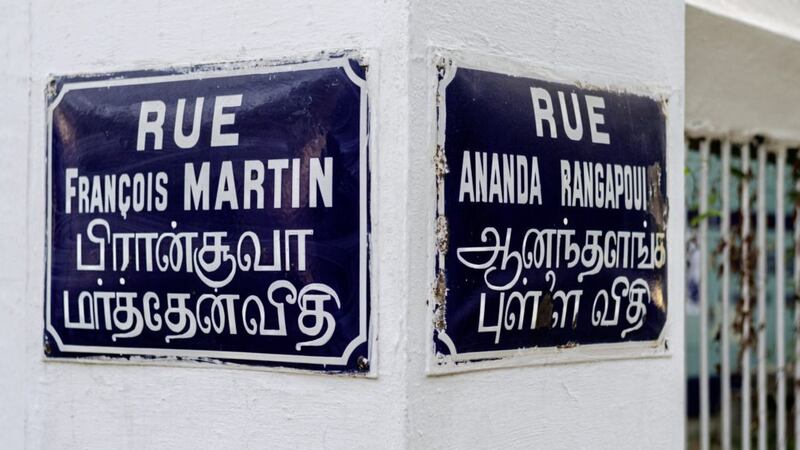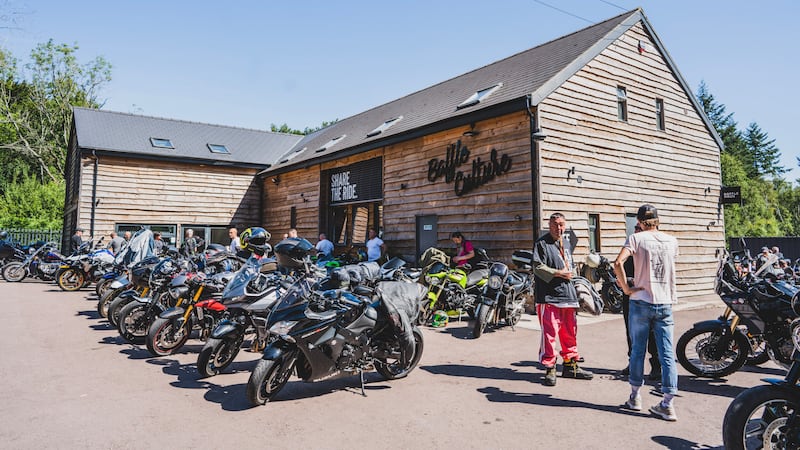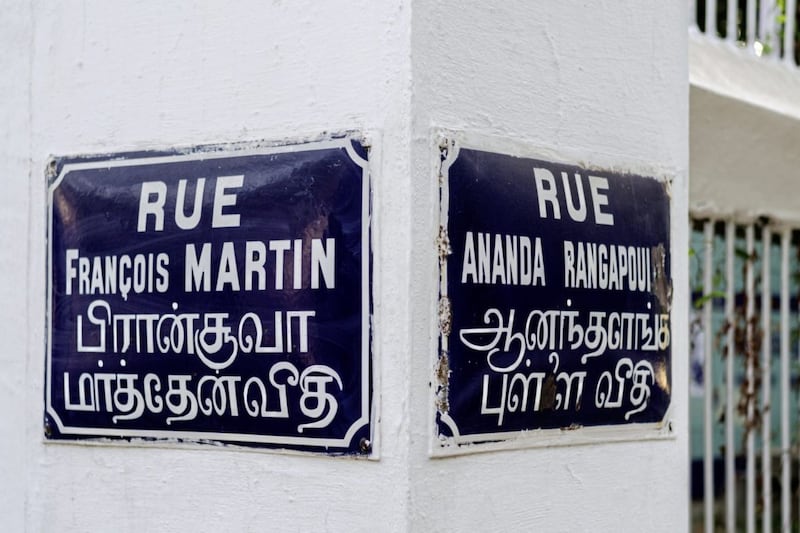IN INDIA, the town of Puducherry is still called Pondy even though the spelling was changed from Pondicherry more than a decade ago. The French spelt it Pondichéry but let’s not get pedantic over an accent, the point is that the appeal of visiting this non-British fragment of colonial India is its one-off Gallic flavour – something you’ll experience by way of accommodation, architecture and, yes, croissants for breakfast.
A quirk of history allowed the French to hold on to a coastal corner of the country while the British were adding the rest of India to their empire. It remained French even after national independence in 1947 and it was another seven years before Puducherry finally became part of India.
Managed without violence or rancour, good relations were maintained between the two countries and Puducherry today is happy with a heritage that offers visitors something unique.
Puducherry is in Tamil Nadu, a southern Indian state which is relatively unknown to European holidaymakers who flock to Goa and cruise on houseboats along Kerala’s waterways. What they miss is a 500-mile stretch of coast, between the city of Chennai and the southernmost point of the subcontinent, facing the Bay of Bengal.
Chennai is the gateway for travel down the coast to Puducherry and if this is your first visit to India the city’s insanely traffic-and people-swollen atmosphere can be overwhelming. Your arrival and departure point is likely to be Chennai and there are some excellent hotels and restaurants that showcase how India has leapfrogged into the 21st century when it comes to providing creature comforts for visitors.
Chennai, formerly Madras, is the capital of south India but there is not a great deal to see after visiting the impressive Kapaleeshwarar Temple where, the story goes, Shiva turned his consort Parvati into a peacock and ordered her to worship him. A richly coloured tower, the gopuram, with more figures of gods than you could count, stands at the entrance; within, there are a number of shrines and pillared pavilions and barefoot devotees pay solemn respect on a daily basis. There is no more convincing an example of the continuing importance of religious worship in modern India.
Comfortable air-conditioned coach from Chennai’s bus station, costing all of £2.50, take three and a half hours to reach Puducherry and, for another £1 a tuk-tuk will drop you off in the French Quarter within ten minutes. The city’s layout follows a grid plan and, making it even easier to get about on foot, the historical French part of the city is neatly sequestered by the sea. Best of all, there is a traffic curfew every evening along the mile-long Beach Road by the sea; and this – trust me – is nirvana for pedestrians anywhere in urban India.
Villa Shanti is a superb place to stay – the croissants here are the real deal – built around an immaculate courtyard where tall palm trees outstretch the height of the building itself. The Parisian architects have recreated a French colonial style that is both serene and chic, its restaurant blends Indian food with modern touches – betel leaves and a fig salad, lobster wrapped in banana leaf – and a cocktail bar completes the modernist touch that every heritage hotel needs.
The 10 rooms of Maison Perumal, built over a century ago for a Tamil family, have been converted into boutique accommodation with a restaurant in its plant-filled atrium. Typical of Puducherry’s heritage-conscious accommodation, but situated just outside the French Quarter, it exudes tranquillity.
A sister hotel, Palai de Mahe, is almost twice as large and boasts an elegant pool and rooftop restaurant to tempt you with prawns in cinnamon.
Puducherry’s beach is not safe for swimming but a walking tour that focuses on Puducherry’s colonial history is recommended, cycle rickshaw tours are bookable through Maison Perumal and the town’s museum is worth the small entrance fee.
There is a local yoga school which is not be confused with the Sri Aurobindo ashram that owns all the grey-painted buildings in the French Quarter. It was founded by an early 20th-century revolutionary, a fugitive from the British in Calcutta, but you’ll hear conflicting views about the ashram’s present-day organisation.
What is still called the Tamil Quarter is the bustling town centre and the bazaar area is worth wandering through for shops and stalls selling colourful cotton throws and bed covers. The first half hour of Life of Pi was filmed in the Botanical Gardens, established by the French in 1826, where huge cannonball trees and royal palms thrive.
Puducherry is a historical anomaly, the only place in India with French street names and where the constabulary still wear kepis, the red hat of the gendarmes until 1981. There is nowhere else like it in the subcontinent.
CHILL-OUT TIME
Situated on the coast between Chennai and Puducherry, Mahabalipuram offers an escape from city life. There are marvellous temples and ancient rock carvings to explore, a sandy beach and a top-class resort hotel.
First impressions of the InterContinental Resort hotel are forbidding ones – bare concrete walls and a fortress-like door into a dark, oversized and box-shaped lobby – but once you step beyond this and into the light the whole scene is transformed: a vast space of lotus-filled ponds, a pool fringed by flowering frangipani, and a Chinese and an Indian restaurant.
A spa adds to the appeal, the main attraction being the Ayurvedic treatments that originated in India some three millennia ago. To reach Mahabalipuram from Puducherry takes two hours by bus and from Chennai one and a half hours.
Anyone who enjoys birdwatching needs to consider a day trip to the well maintained Vedanthangal Bird Sanctuary, complete with watch tower, from Mahabalipuram or Chennai. Between November and early March, many thousands of migrating birds – storks, pelicans, spoonbills – make this their resting point.
FACT FILE
Getting there
A return from London Heathrow to Chennai via Delhi with Jet Airways costs from £368 per person; flights are daily and are also available via Amsterdam; SEE jetairways.com or call 0808 101 1199.
Accommodation
:: Chennai: Crowne Plaza (crowneplaza.com) from £75; Hilton Chennai (Hilton.com) from £100; The Leela Palace (theleela.com) from £135.
:: Puducherry: Villa Shanti (lavillashanti.com) has rooms from £84; Maison Perumal (cghearthmaisonperumal.com) £90 in high season; Palai de Mahe (cghearth.com/palaisdemahe) £150.
:: Mahabalipuram: InterContinental Resort from £90.
Restaurants
Hotels are the best places to eat in Chennai: the Crowne Plaza has half a dozen outlets for food and drink; the Hilton has a buffet and a fine-dining Indian restaurant; Sunday brunch at The Leela Palace is a magnificent affair and The Flying Elephant at the Park Hyatt is deservedly popular. All the heritage hotels in Puducherry have attractive restaurants in their courtyards, averaging £10 for three courses, and visiting as many as time allows should be high on your agenda.
Activities
Walking tours (storytrails.in/india/trails) £13; surfing with the Kallialay Surf School, a mile north of Puducherry (www.surfschoolindia.com).
Guides
Lonely Planet’s South India & Kerala; for bird watchers Collins’ Birds of India
When to go
December to March are the best months for travelling.



